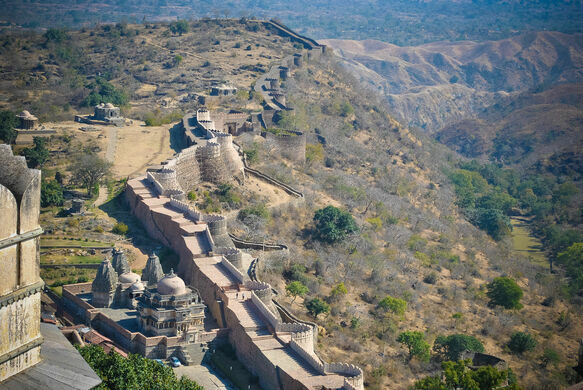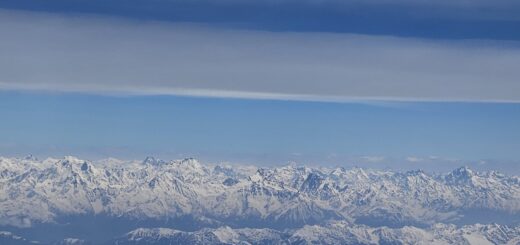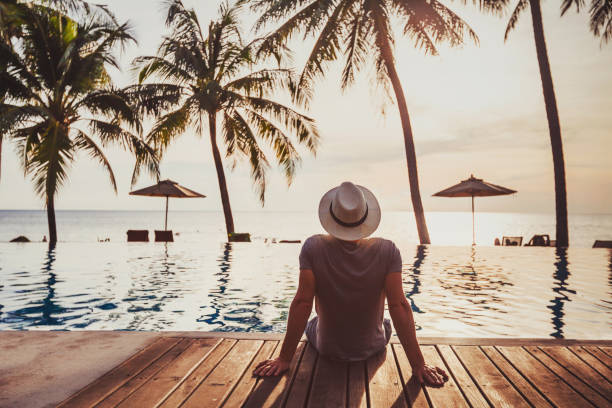The great wall of India
Kumbhalgarh wall, often referred to as the great wall of India, is a magnificent fort surrounding Kumbhalgarh located in Rajsamand, Rajasthan, India. It is the the second-longest continuous wall on the planet. The fort constructed 3600 feet above sea level, has a 36 Km long wall surrounding the fort. It was built in the 15th century AD by Rana Kumbha.

The wall is massive and majestic and runs through the valleys and mountains, similar to the Great Wall of China. The frontal walls are fifteen feet thick. Kumbhalgarh has seven fortified gateways. There are over 360 temples within the fort, 300 ancient Jain and the rest Hindu. From the palace top, you can view far into the Aravalli Range. The sand dunes of the Thar Desert can be seen from the fort walls.
It is registered as UNESCO world heritage site – Hill forts of Rajasthan. It was the most important fort in Mewar after Chittorgarh Fort. Also famous as birthplace of Mewar’s legendary king Maharana Pratap.
Things to See in the Kumbhalgarh Fort Complex:
The sprawling fort complex has many well-preserved structures that narrate the saga of its rich past. The things to see in Kumbhalgarh include:
- Kumbha Palace, the residence of the King
- Badal Mahal, a two-storied structure built by Rana Fateh Singh
- Lakhola Tank, constructed by Rana Lakha
- Ram Pol, the main gateway to the fort
- Aaret Pol, Hanuman Pol and Halla Pol – other major gateways to the fort
- Badshahi Bavdi, a water tank
- Hindu temples, including the ancient Ganesha temple and Neel Kanth Mahadeva temple
- Jain temples. including the Parsva Natha temple, Golera Jain temple, Mamdeo temple, Mataji temple, Surya Mandir and Pital Shah jain temple
- Chattris, Baoris and water reservoirs
- Kumbhalgarh Light and Sound show (between 6:45 PM to 7:30 PM daily)
Some interesting facts about Kumbhalgarh Fort:
- Kumbhalgarh Fort is one of the largest fort complexes in the whole world and the second largest fort in India, the first being the Chittorgarh Fort.
- The fort’s walls are so wide that eight horses can walk side by side .
- Before entering the fort, you have to cross seven massive gates. Each consecutive gate is narrower than the previous one. The gates were constructed in this manner so that elephants and horses can’t enter the fort beyond a certain point.
- King Samprati, who is believed to be the builder of the original fort, was the grandson of Emperor Ashoka.
How and When to visit:
Best time to visit is between September to March, when it is cooler.
By Air: Udaipur is the nearest domestic airport. One can take flights to other important tourist destinations of the region like Jaipur, Jodhpur, Aurangabad, Mumbai, and Delhi. The nearest international airport is in Delhi.
By Rail: Udaipur is also the nearest railway station from Kumbhalgarh. There are trains for Delhi, Chittaur, Ahmedabad, Jaipur, Ajmer, and Jodhpur from Udaipur.
By Road: From Udaipur (82 Km northwest) you can take a car or Bus.













